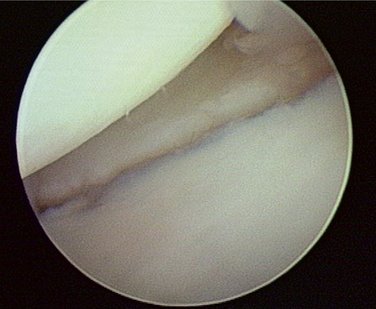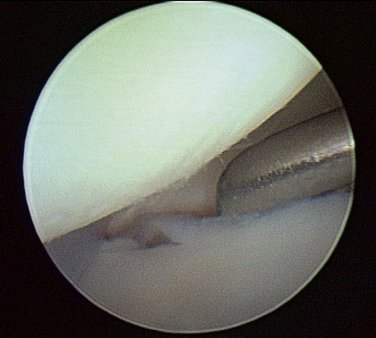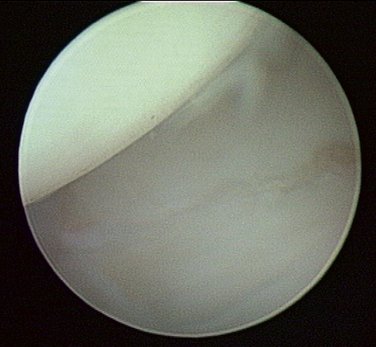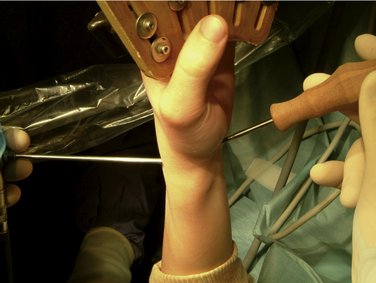CHAPTER 44 The Role of Arthroscopy in Scaphoid Fractures
Rationale and Basic Science Pertinent to the Procedure
The complex morphology and the small size of the scaphoid bone resulted in the development of numerous sophisticated techniques to achieve an anatomical and stable fixation. In 1984, Herbert and Fischer1 reported their experience using a cannulated screw, which originally was not developed for fixation of scaphoid fractures. In the early 1990s, the first article was published2 describing inserting cannulated screws with a minimally invasive technique. The main principle was to preserve the surrounding ligaments of the carpal bones to avoid a destabilization of the reduction and to protect the fragile vascularization of the scaphoid bone.3
Whipple4,5 first presented a method with percutaneous screw fixation using a modified Herbert screw combined with image intensifier control and arthroscopic examination of the wrist. This method allowed the surgeon to control the reduction and to assess potential associated lesions.
Operative Technique
Under ambulatory conditions, the operation is performed with locoregional anesthesia. The patient is placed in the supine position on a special arm table with a tourniquet on the arm applied as proximal as possible. During the critical parts of the operation, the forearm can be extended using a pad underneath the wrist. Another possibility is to put the wrist under traction with a traction device, which is placed outside the arm table still allowing positioning the image intensifier. A retrograde (from distal to proximal) screw fixation is aimed. First, the fracture is visualized under arthroscopy using standard portals, leaving the forearm free on the table. Next, a 1-mm pin is placed through a small (5-mm) incision to the distal tuberosity of the scaphoid in a retrograde fashion (Fig. 44-1). Then the wrist is put under traction allowing arthroscopic control to verify the exact reduction of the scaphoid.

FIGURE 44-1 Percutaneous retrograde pinning of the scaphoid through a small approach centered on the distal tuberosity.
The arthroscope is introduced through a radial midcarpal portal through which the fracture can be assessed easily. If necessary, a débridement of the articulation can be done with the shaver while cleaning the medial surface of the scaphoid. If the fracture is displaced, reduction of the fragments is possible with a little retractor introduced through the STT midcarpal portal. Under arthroscopic control, the fracture fixation pin is slightly pulled back beyond the fracture line, then the fracture is reduced, and the pin is replaced into the proximal fragment (Figs. 44-2, 44-3, and 44-4). As soon as a satisfactory reduction is achieved, the hand is removed from the traction device, and the wrist is positioned on a pad on the arm table.
Under fluoroscopic control, the hole for the screw is tapped. If a resorbable screw is chosen, a double-sized trephine, drilling proximal with a 3-mm part and distal with a 3.5-mm part at the same time, is used. The two different screw threads are separately prepared mechanically to avoid the phenomenon of blockage in torsion with a resorbable screw. This avoids the risk of implant fracture (Fig. 44-5). The screw is inserted over the guidewire. Again under arthroscopic control, the radiocarpal compartment is visualized through the 3,4 portal; this allows the surgeon to verify the absence of an intra-articular penetration of the screw head at the level of the proximal pole (Fig. 44-6).
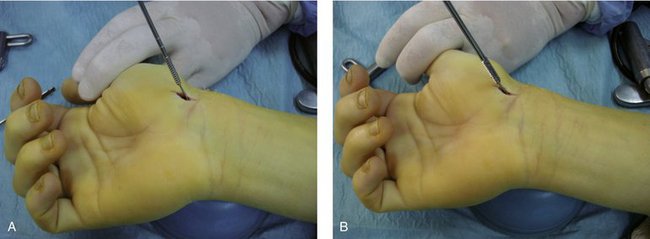
FIGURE 44-5 A, Tapping of the proximal part of the scaphoid. B, Tapping of the distal part of the scaphoid.

